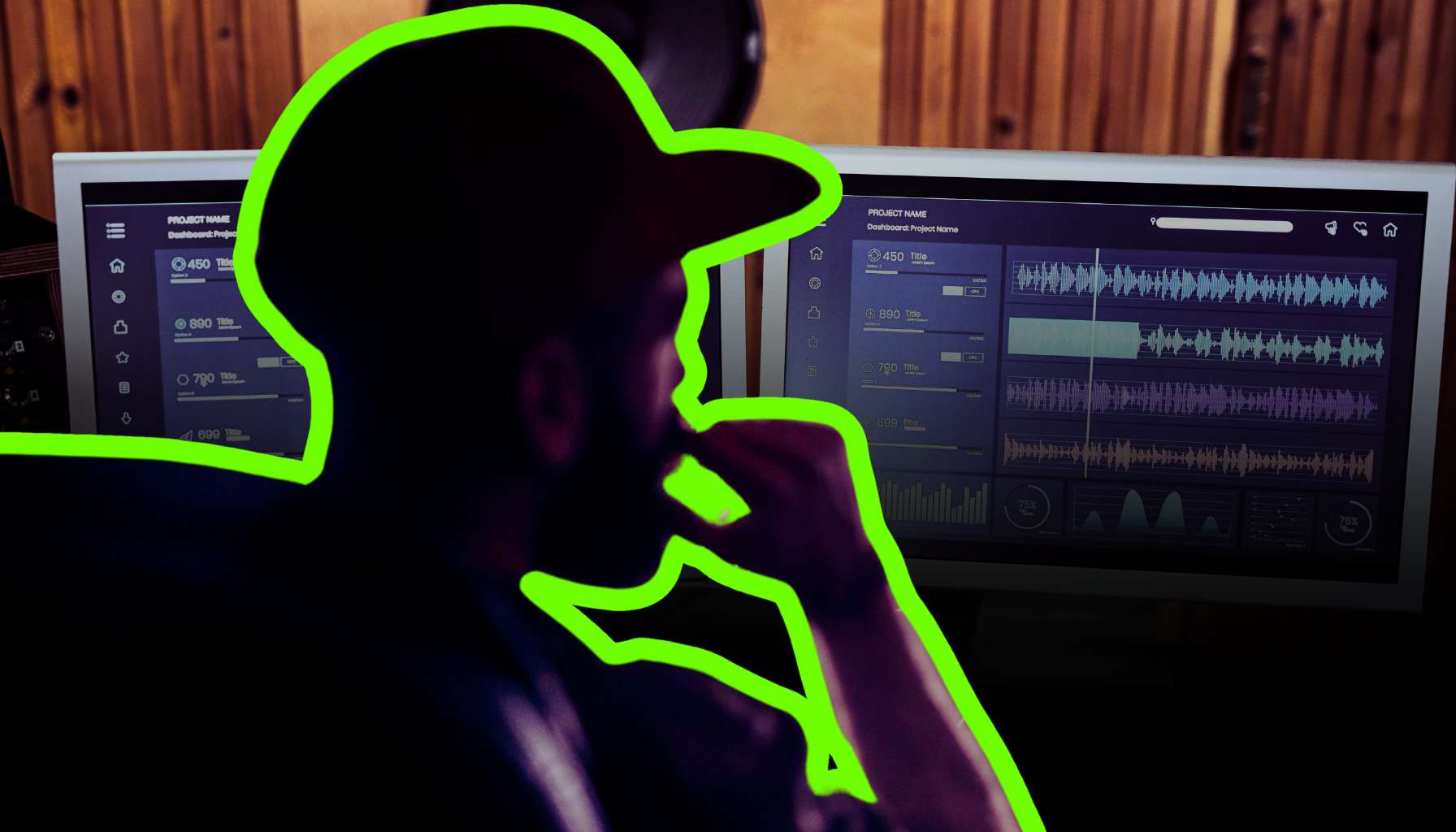Introduction to Bluegrass Music Production
Before diving headlong into the pocket of a banjo’s twang or the soulful lament of a mountain fiddle, it’s crucial to set the scene for what lies at the heart of bluegrass music production. Bridging the gap between the rollicking sounds of our forebears and the crisp production values of today is no banjo-pickin’ joke. Whether you’re a studio wizard looking to capture the high lonesome sound or a newcomer aiming to tread the boards of bluegrass, understanding the roots and characteristics of this genre is paramount.
The Roots and Characteristics of Bluegrass Music
Bluegrass isn’t just music—it’s storytelling with strings attached, woven into the fabric of American history. Knowing its origins is understanding the tapestry of genres it has influenced. Born in the Appalachian region, bluegrass is a confluence of Scotch-Irish, English, and African-American musical traditions. It’s raw, it’s emotive, and it revolves around themes that often mirror the peaks and valleys of life itself.
Historical Context and Modern Evolution
A nod to the past while striding into the present, bluegrass has morphed through the ages, melding tradition with contemporary soundscapes. Today’s bluegrass production honors the essence of its forefathers while infusing modern elements that make it resonate with today’s audiences. Much like a cherished family recipe modified over generations, modern evolution does not forget the taste of its first iteration.
Distinctive Sound and Instrumentation
The signature sound of bluegrass can be as recognizable as a rooster’s crow at dawn. It’s characterized by acoustic string instruments: the banjo’s rapid-fire roll, the mandolin’s chop, the fiddle’s mournful wail, the guitar’s steady rhythm, and not to forget the stand-up bass that keeps everyone honest. Each instrument is a thread in the complex weave of bluegrass music, complete with solos that tell their own slice of the story without uttering a word.
The Studio Set-up for Bluegrass Recording
Moving on to the recording studio—this isn’t your space-ship console of blinking lights and sliders. Bluegrass demands authenticity, and capturing that through microphones and mixing boards is the stealth art within the sound waves. Your studio needs the acoustic treatment to honor the living room jams of yesteryear, albeit without the low ceilings and the unwanted resonance of Aunt Betty’s antique coffee table.
Acoustic Treatment and Room Considerations
Acoustic treatment in the studio allows the harmonious blend of bluegrass to emerge untarnished. It’s about respecting the ebb and flow of natural acoustics, without letting your room’s personality overshadow the music. Think of it like brewing the perfect cup of coffee, where the water temperature and quality determine whether you taste the bean’s origin or just a scorched mess.
Importance of Capturing Authenticity
In bluegrass, authenticity isn’t just a buzzword—it’s the cornerstone of production. It doesn’t mean you shun all the advancements of modern recording technology. Rather, it’s about using those tools to embody the spirit and spontaneity of a genre steeped in tradition. This is not the time for auto-tune or synthesized banjo rolls; it’s about bottling that front-porch magic and letting it loose in the ears of an unsuspecting world. As we clip on our studio badges and pick our favorite spots in the control room, the storyboard for today’s bluegrass journey unfolds.
We’ve laid the foundation of understanding, and now it’s time to wade deeper into the sparkling stream of sound. Up next, we’ll dissect the mechanics behind the foot-stomping symphony – disciplining our stringed comrades, from the twangy banjo to the soulful fiddle, ensuring each has its time to shine. So tighten your strings and rosin up that bow; the heart of bluegrass instrumental nuance beckons.
Bluegrass Instrumentation and Its Unique Challenges
Marching on from setting the stage (or should we say, studio) for capturing the soul-stirring energy of bluegrass music, we sidle up for a close encounter with the very heartstrings of the genre: its instruments. From the twang of a banjo to the soulful strains of a fiddle, getting these sounds recorded right is a dance with precision—like threading a needle while riding a horse. Let’s dive into the challenges of recording bluegrass instruments and the mic selection wizardry that’ll keep your audio as crisp as mountain air.
Overview of Traditional Bluegrass Instruments
If bluegrass were a kingdom, its royalty would be an assembly of string instruments: the powerful king banjo, the sharp queen fiddle, the jolly duke mandolin, and more. Each has a distinctive voice that must shine, yet harmonize with the ensemble. The string dominance in bluegrass cannot be overstated; it’s a veritable string-fling love affair, and capturing each timbre in its truest form is akin to portraiture for your ears.
Role of Each Instrument in Bluegrass Ensemble
Understanding the role of each instrument is music production gold. The banjo, with its metallic staccato, provides the rhythmic backbone, while the mandolin slices through with its chirpy, percussive chops. Then there’s the fiddle, weaving a tapestry of emotional motifs, and the guitar strumming the steady rhythm. It’s like a culinary recipe where each ingredient plays a critical role—neglect one, and the whole dish falls apart.
Microphone Selection for Bluegrass Instruments
Imagine approaching microphone selection like pairing wine with food. It’s an art. Matching microphones to instruments ensures that the body of the mandolin or the sparkle of the banjo isn’t lost in translation from strings to soundwaves. It’s a case of ‘horses for courses’—what might flatter the warm undertones of a guitar could render a banjo’s crisp twang a muddy mess.
Dynamic vs. Condenser Mics: Pros and Cons
Ever been in a debate where both sides have compelling arguments? Welcome to the dynamic versus condenser microphone standoff. The robust nature of dynamic mics makes them the blue-collar workers perfect for capturing loud, spirited performances without a hint of complaint.
On the opposite bench, the sensitivity and nuance of condenser mics make them the aristocrats of studio recording—ideal for detailed sonic representation, from the softest pluck to the sizzle of a high-speed fiddle run. Transitioning from the peculiarities of bluegrass instrumentation into the arena of microphone techniques, the rhythm of our production waltz gets all the more intricate. Knowing which mic to mate with which instrument is just half the battle—next comes the symphony of placement.
Microphone Technique Essentials
As we meander down the well-trodden path of Bluegrass music production, lined with the rich foliage of stringed instruments and twangy vocals, we reach a crucial junction: microphone technique. Forget the old “point and shoot” method; this is about as delicate as arranging a bouquet of roses (thorns included). Let’s dally a while in the garden of microphone techniques before taking the next step to capture vocals that resonate with the soulful cry of the lonesome pines.
Single Mic Technique for a Cohesive Ensemble Sound
Imagine this: a single microphone standing like a silent sentinel amidst a circle of bluegrass musicians. This isn’t laziness; it’s an art, my friends. A single mic captures not just the sound but the kinetic dance of a live bluegrass ensemble. The way the fiddle player leans in for her solo and the banjo picker steps back, it’s a ballet choreographed by sound.
Placement Strategies and Proximity Considerations
The essence here is proximity. Picture each musician dynamically moving towards and away from the mic like some strange cosmic dance, regulating their own volume and blend within the group. It’s part performance, part engineering, and all bluegrass tradition.
Managing Balance and Blend with Positioning
Achieving a harmonious balance with a single mic might feel like trying to juggle while reciting Shakespeare, but the payoff is a natural, vibrant performance, preserving the heart and soul of bluegrass in its most authentic form.
Multi-Mic Techniques for Isolation and Clarity
If the single mic technique is an intimate soirée, multi-mic recording is its sprawling festival counterpart. Close-miking each instrument is like giving every musician their own personal stage, providing clarity and isolation that enables individual instruments to shine.
Close-Mic’ing Individual Instruments
For those who want to capture the growl of the mandolin’s chop and the weepy wails of the fiddle, bringing the mics in close is like tuning a microscope to see the texture of sound. It does, however, mean you’ll potentially have more tracks than a cross-country train journey, but hey, that’s the beauty of choices.
Overhead and Ambient Mic Considerations
Then, there are overhead mics, hanging like the full moon over a Kentucky night, capturing the ambiance of the room. These are the unsung heroes that add dimension and space, allowing the music to breathe and echo the residual warmth of a wooden porch under summer stars. As we segue from the technical tango of microphone techniques to the heart-stirring harmonies of bluegrass vocals, remember: it’s not just about capturing sound but about seizing energy—the infectious stomp, the collective breath of musicians mid-performance, the very spirit that makes bluegrass what it is.
Stay tuned, because in the next turn of our journey, we’ll explore how to bottle the lightning that is the bluegrass vocal, from the soul-stirring solo to the tight-knit, honeyed harmonies that are the genre’s vocal hallmark.
Capturing Vocals in Bluegrass Production
Leaving the world of meticulously placed mics on strings and frets, we wade into the waters of vocal recording–a space where the heart of Bluegrass often beats the loudest. Here’s where those poignant tales and lonesome harmonies come to life, and getting it right is as critical as the choice between using your grandma’s cornbread recipe or one from a box. Authenticity is king, and in Bluegrass vocals, it’s all about capturing that raw, homespun quality that feels like it’s being sung from a moonlit porch, not a padded studio.
Bluegrass Vocal Style and Harmonies
The signature sound of Bluegrass vocals is as unmistakable as the smell of pine in the Appalachian air. It’s about the grit, the gusto, and the generations of storytelling woven into each note. But unlike solo pop vocals that often sit neatly atop the mix, Bluegrass harmonies are about blending—finding balance is like a potluck dinner; everyone brings a dish to the table. And arranging these harmonies? Well, that’s more art than science, a little like arranging people in a family photo so no one’s hidden behind Uncle Bob’s ten-gallon hat.
Arranging and Recording Harmonies
When recording, think about how the harmonies interact—is the high lonesome sound dominating the track, or is it a more egalitarian vocal union? Bluegrass harmonies are less about melodic meandering and more about tight, soulful precision, like a finely tuned engine in a classic car.
Mic Techniques for Bluegrass Vocals
With Bluegrass, you’re often choosing between a solo vocal mic selection and the one-mic group huddle. Both have their place, like overalls and Sunday best. The solo approach lets you finesse the sound of each voice, whereas the one-mic strategy captures the collective energy of the group, mediating sibling-like squabbles between vocal frequencies with skillful placement.
Solo Vocal Mic Selection and Placement
Selecting a mic for Bluegrass vocals is akin to selecting the right lure for fishing—it’s all about what you’re trying to catch. Large-diaphragm condenser mics can offer the sensitivity needed to capture every ounce of that earthy vocal tone, while dynamic mics bring a robustness that can withstand the most impassioned belters.
Group Vocal Considerations: To Isolate or Not?
The great debate: to isolate or to let the harmonies roam free in a single mic setup? Isolation offers control but can tame the inherent wildness that gives Bluegrass its character. Conversely, a single mic can capture a spirited performance but risk muddled frequencies quicker than muddy boots after a rainstorm.
Recording the Upright Bass in Bluegrass Music
Now that we’ve twanged our way through the fiddle strings and plucked at the heartstrings with the banjo, let’s not overlook the unsung hero of the bluegrass band – the upright bass. It’s like the Gandalf of your ensemble, wise and deep, providing a foundation upon which all other sounds are built. This beast of an instrument has its own set of challenges when it comes to recording, but fear not! With a little bit of know-how and some mic sorcery, you can weave that low-end magic into your bluegrass mix with finesse.
Understanding the Challenges of Upright Bass Recording
The upright bass isn’t just another stringed instrument; it’s a complex creature with a sound that resonates through wood and string in a dance of acoustical wizardry. Capturing its essence isn’t as simple as slapping a mic in front and calling it a day. It’s about recognizing the acoustic complexity and mahogany-rich tonalities that give bluegrass its grounding force.
Choice of Mic and Placement for Full-Bodied Sound
When it comes to the choice of mic, think Goldilocks – not too harsh, not too soft, it has to be just right. A large diaphragm condenser often does the trick, adeptly picking up the broad range of frequencies this giant violin churns out. Placement is key; too close and you’ll get a boomy mess, like a bear in a china shop. A smidgen away from the F-hole, pointed right at the heart of the bass, you’ll find the sweet spot that offers a full-bodied sound without muddying the mix.
Techniques for Blending Bass with the Full Mix
The upright bass and the rest of the ensemble should be like a well-blended cup of coffee, strong yet smooth. EQ and compression are the milk and sugar here, ensuring that each sip is just as satisfying as the first. Applying EQ to roll off unwanted rumble and to accentuate the punchy presence of the strings allows the bass to sit comfortably in the mix like a well-worn armchair.
EQ and Compression Tips
Gently sculpting the EQ by cutting some of the mud around 200-300Hz, while giving a slight nudge to the upper mids, will let the finger-plucked articulations shine through. Compression should be handled with the deftness of a pickpocket – too aggressive and you’ll squeeze the life out of the bass, too lenient and your bass will wander like a stray dog, unkempt and uncontrollable.
Maintaining Low-End Definition without Overpowering
In bluegrass, it’s not just about the notes you play, it’s about the notes you don’t. The same goes for the low end; it’s about definition, not domination. You want the upright bass to rumble like distant thunder, not like a freight train running through your living room. Finding the balance where the bass complements rather than competes ensures that every instrument has its moment in the sun, or in this case, the barnyard dance.
With the upright bass recorded so it hums along like a vintage tractor on a summer’s day, we pave the way to blend tradition with modernity in our bluegrass mix. In the next section, we’ll straddle the line between keeping the organic, foot-tapping rawness of bluegrass and using some of the tools of the trade to enhance the listening experience without scrubbing away the soul of the music. Forget about your grandpa’s bluegrass for a second; we’re stepping into a world where old standards meet new tweaks. Stay tuned, because we’re about to swing open the saloon doors to the sonic crossroads of the past and the present.
Balancing Tradition and Modern Techniques in the Mix
Bluegrass, with its raw beauty and acoustic mastery, has tapped its foot into the digital age, blending deep-rooted tradition with sleek studio savvy. The purists may balk at modern influences like a cat eyeing a newfangled robot vacuum, but isn’t evolution the mother of reinvention? Let’s wade in and figure out how to mix this time-honored genre without stepping on the toes of its storied past.
Keeping the Authentic Bluegrass Sound
In bluegrass, authenticity isn’t just a buzzword; it’s the golden rule. The charm of the genre lies in the honesty of its sound, and when it comes to mixing, it’s about as minimal as the contents of a monk’s cell. Flipping through the pages of bluegrass history, one might assume that anything beyond basic level balancing is akin to sacrilege.
But, as the monks would surely agree, a touch of modernity can be both refreshing and enlightening. Reverberation can be the acoustic soul of your mix. Natural room reverb spices up the track like a pinch of salt in a stew – enhancing, not overpowering. However, not all of us have the luxury of cavernous halls; hence, artificial ambience steps into the spotlight with a do-si-do, offering a palette to emulate everything from a cozy nook to a grand cathedral.
Natural Reverb vs. Artificial Ambience
When choosing between the living, breathing character of natural reverb and the Swiss Army knife versatility of artificial ambience, it’s like deciding between an heirloom tomato and a hydroponic one. Both have their place in the kitchen. Apply the varnish of reverb with a master’s touch, and your mix will resonate with the soul of a hundred-year-old fiddle – whether you recorded in a shed or a studio doesn’t matter.
Modern Enhancements for Contemporary Productions
Let’s tip our hats to modernity now. Creative use of panning offers a sonic landscape as wide as the Appalachian trails. In the world of bluegrass mixing, stereo imaging should be approached with the same caution one might use when adding habanero to a recipe – just enough for zest, but not so much that you lose the dish’s original flavor. Subtlety is the seasoned hand of the bluegrass mixing board. The dash of compression, the whisper of EQ, and the ghosting effects that should be felt, not heard. They polish the mix without smudging the acoustic fingerprints that give the genre its grit.
Subtle Effects and Processing to Polish the Mix
A light compression can be the great unifier across the instrumental spread, squaring up their dynamics like an old-timey dance line. EQ is your fine-toothed comb, gently teasing out each string’s voice without mussing up the ensemble’s hairdo. When it comes to applying effects, think of it like adding sugar to sweet tea – it’s all about enhancing the natural goodness already there.
FAQs on Bluegrass Production: Mic Techniques and Instrumentation
The spirited pluck of the banjo, the melodic twang of the mandolin, and the rich natural harmonies that set your foot a-tapping—this is the world of bluegrass music production. But how do you capture this raw, energetic sound so it fills the listener’s soul as if they’re front and center at a folk festival? Brew yourself a cup of something strong, and let’s unravel the conundrums of mic techniques and instrumentation peculiar to bluegrass.
How Can I Record Bluegrass Music With Limited Microphones?
If you’re working with a mic collection that’s more ’boutique’ than ‘behemoth,’ fear not. The single mic technique can be your golden ticket. A large-diaphragm condenser mic, strategically placed, can absorb the whole band’s energy in a live, cooperative dance around the mic. It’s like huddling around a campfire telling stories – intimate, warm, and authentic.
What Are the Best Mic Techniques for Capturing a Live Bluegrass Performance?
Picture this: One premium-quality condenser mic in the heart of the performance space, and your band mates’ weaving in and out, approaching for solos and retreating for rhythm. Alternatively, tight spot micing can ensure clarity and isolation in the mix for that ideal balance; make each instrument sing its own story within the communal narrative.
Should I Use a Click Track When Recording Bluegrass Music?
Bluegrass is all about the feel, the ebb and flow of tempo that breathes life into a piece. While click tracks can help maintain rhythm, they can also become the unruly guest who outstays their welcome. Use sparingly or ditch altogether to keep the organic, lively pulse of the genre.
How Do I Avoid Feedback and Bleed When Using the Single Mic Technique?
It’s an art all its own—finding that sweet spot in mic placement to evade the screech of feedback and the muddle of bleed. Your best bet is to experiment with distance and orientation, and maybe pray to the audio deities for good measure. Proper microphone selection, with a predictable pickup pattern, can also save you from a world of sonic grief.
Can I Achieve a Professional Bluegrass Sound at Home?
Certainly! Home is where the heart is, and it can also be where the studio-quality sound resides. Acoustic treatment, a suitable mic setup, and a pinch of patience can yield a sound as crisp as an autumn morning in Appalachia—just don’t wake the neighbors.
Is It Necessary to Record Each Instrument Separately in Bluegrass Music?
Comes down to your end goal and the vibe you’re chasing. Recording each instrument separately with multi-mic techniques grants you more control in the mix but can lose some spontaneity. There’s a charm in the live ‘around-a-mic’ recording that’s as authentic as grandma’s cornbread—almost palpable to the listener’s ear.
What Are Some Mixdown Considerations Specific to Bluegrass Music?
Minimal processing is your friend here; let the natural timbre of the instruments be the star. Look for that ideal reverb that enhances but doesn’t wash out the character. And when EQ’ing, it’s like seasoning—just enough to enhance, never to overpower.
How Can I Maintain the Energy of a Bluegrass Performance in a Studio Environment?
Envision your studio as a moonshiner’s hidden cabin — a place of secrets and stories. Encourage performances that are dynamic and full of the same gusto one would give to a rapt festival audience. The energy isn’t just in the playing; it’s in the atmosphere, the mindset, and yes, even the stomping feet.
What Post-Production Techniques Should Be Used Sparingly in Bluegrass Production?
Heavy-handed compression and auto-tune can smother the very soul of bluegrass. Instead, think of post-production like a well-aged bourbon; a little goes a long way. Employ reverb, EQ, and other effects with a light touch to preserve the raw spirit of the music.
Now, as you set your filters and adjust your levels, you’re ready to wade into the waters of bluegrass with a keener sense of what lies beneath the surface. But always stay open to surprises; sometimes the best recordings happen when the rule book is tossed out the window, and the spontaneous combustion of creativity is given free reign. Let’s continue to ride the rhythm on this banjo-riffic journey through the sonic landscapes of music production.















